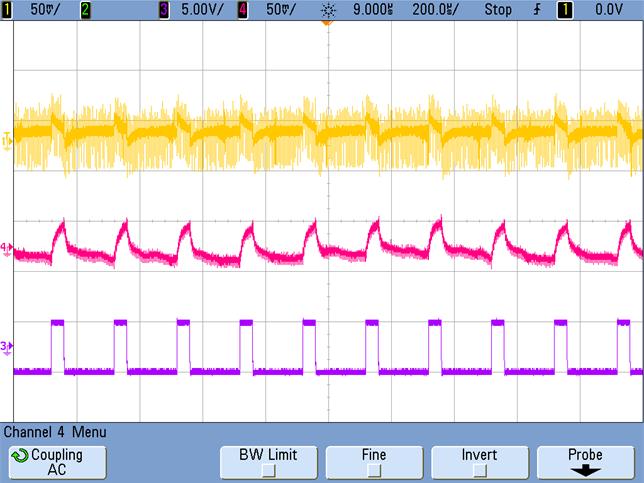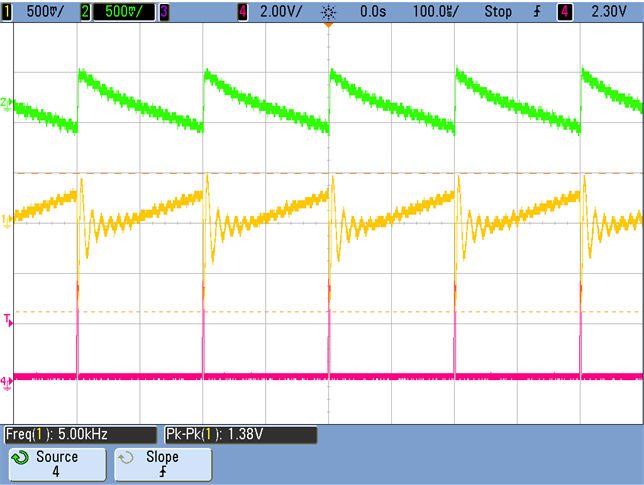SLOA284A january 2020 – may 2023 AFE5832 , AFE5832LP , ISO7741 , ISOW7841 , LM25037 , LM25180 , LM5180 , LM5181 , LM5181-Q1 , TX7316 , TX7332
3.3 Load Transient Test
Figure 3-7 shows the load transient response of the power supply. The load of 25 mA per rail is applied onto both positive and negative rail with a duty cycle 20% at pulse repetition frequency of 5 kHz, as shown in purple waveform. A drop of less than 50 mV is observed on both the rails. Moreover, the load transient response test is repeated in case the load of the power supply is 1 A per rail with a duty cycle of 1%, at pulse repetition frequency of 5 kHz. The result in Figure 3-8, shows a drop of less than 1 V per rail.
 Figure 3-7 Load Transient Response of
Positive and Negative Output Rail With Symmetrical Loads (25 mA)
Figure 3-7 Load Transient Response of
Positive and Negative Output Rail With Symmetrical Loads (25 mA) Figure 3-8 Load Transient Response of
Positive and Negative Output Rail With Symmetrical Loads (1A)
Figure 3-8 Load Transient Response of
Positive and Negative Output Rail With Symmetrical Loads (1A)